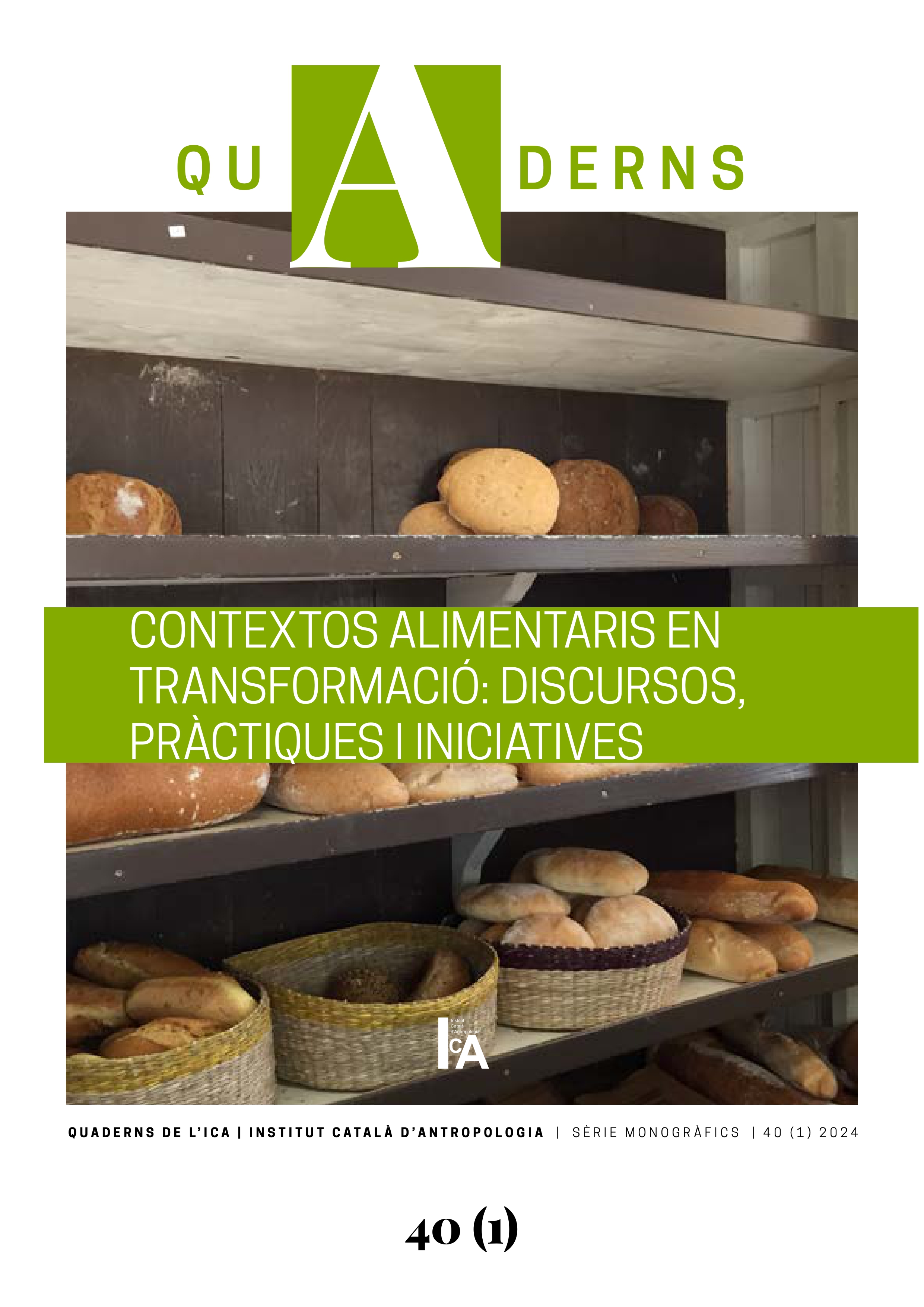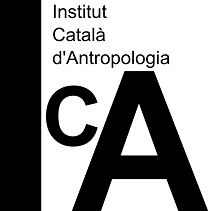Governança de la sexualitat a l'etapa d'Educació Infantil
DOI:
https://doi.org/10.56247/qua.456Paraules clau:
Sexualitat, infància, governança, educació infantil, vigilància comunicativaResum
A Catalunya, la sexualitat infantil és governada de diferents maneres segons l’edat i el gènere. A partir de l’anàlisi de narratives d’infants d’entre tres i cinc anys de quatre escoles públiques catalanes, emmarcades en el projecte SexAFIN, s’han analitzat les percepcions dels infants al voltant de la sexualitat i l’afectivitat. Emmarcat en les epistemologies feministes i la comprensió de la governança de la sexualitat, aquest article reflexiona sobre el condicionament de la vigilància comunicativa en les significacions de la corporalitat i el gènere dels infants, així com la dominació adulta en l’accés als cossos dels menors.
Descàrregues
Global Statistics ℹ️
|
247
Views
|
203
Downloads
|
|
450
Total
|
|
Referències
Acedo, N. i Torras, M. (2008). Encarna(c)ciones. Teoría(s) de los cuerpos: 4 (Cuerpos que cuentan). Barcelona: UOC.
Ahmed, S. (2015). La política cultural de las emociones. Universidad Nacional Autónoma de México-Centro de Investigaciones y Estudios de Género. Mèxic.
Álvarez, B., Malgosa, E. i Marre, D. (2022). Strategies for ethnography about sensitive topics: a children’s sexuality education program in Spain. A Pandeli, Gaggiotti & Sutherland (Eds). Organizational Ethnography: An Experiential and Practical Guide (pp. 126-140). London: Routledge. https://doi.org/10.4324/9781003021582 DOI: https://doi.org/10.4324/9781003021582-11
Alvarez, M. i Giamberardino, G. (2021). Ensamblajes de género, sexualidad(es) y educación. Intervenciones críticas entre el activismo y la académia. Buenos Aires: Unicen.
Andújar, A. G. i Gómez, T. G. (2020). Las intersexualidades en la educación afectivo-sexual: análisis sobre su presencia y tratamiento. Educar, 439-456. https://doi.org/10.5565/rev/educar.1092 DOI: https://doi.org/10.5565/rev/educar.1092
Angelides, S. (2004). Feminism, child sexual abuse, and the erasure of child sexuality. GLQ, 10(2), 141–177. https://doi.org/10.1215/10642684-10-2-141 DOI: https://doi.org/10.1215/10642684-10-2-141
Armora, E. (29 de Novembre de 2022). La guía educativa que enseña a masturbarse desde los 3 años llega a los tribunales de Cataluña. ABC Cataluña.
Arruda, Á., Bartra, E., Blazquez, N., Castañeda, M. P., Corres, P., Delgado, G., Maffía, D. (2012). Investigación feminista: Epistemología, metodología y representaciones sociales. Méxic: UNAM: Centro de Investigaciones Interdisciplinarias en Ciencias.
Balasch, Marcel y Montenegro, Marisela. (2003). Una propuesta metodológica desde la epistemología de los conocimientos situados: Las producciones narrativas. Encuentros en Psicología Social, 1(3), 44-48.
Bertran, M. (2015). Factors that influence friendship choices in children under 3 in two schools: An approach towards child culture in formal settings in Barcelona. Childhood, 22(2), 187-200. https://doi.org/10.1177/0907568214528224 DOI: https://doi.org/10.1177/0907568214528224
Bhana, D. (2008). Discourses of Childhood Innocence in Primary School: HIV AIDS Education in South Africa. African Journal of AIDS Research, 7(1), 149-158. https://doi.org/10.2989/AJAR.2008.7.1.15.443 DOI: https://doi.org/10.2989/AJAR.2008.7.1.15.443
Bhana, D. (2013). Kiss and tell: Boys, girls and sexualities in the early years. Agenda 27(3): 57-66. https://doi.org/10.1080/10130950.2013.834677 DOI: https://doi.org/10.1080/10130950.2013.834677
Blaise, M. (2009). "What a girl wants, what a girl needs": Responding to sex, gender, and sexuality in the early childhood classroom. Journal of Research in Childhood Education, 23(4), 450-460. https://doi.org/10.1080/02568540909594673 DOI: https://doi.org/10.1080/02568540909594673
Bucholtz M i Hall K (2004). Theorizing identity in language and sexuality research. Language in Society, 33(4): 469-515. DOI: https://doi.org/10.1017/S0047404504334020
Butler, J. (2016). Los sentidos del sujeto. Herder, Barcelona.
Camargo, A. M. i Ribeiro, C. (2003). La educación sexual en lo cotidiano de la escuela. Educar, 31, 67-85. https://doi.org/10.5565/rev/educar.305 DOI: https://doi.org/10.5565/rev/educar.305
Castro, C. (30 de Novembre de 2022). Escándalo en España por la distribución de cartillas que enseñan a niños de tres años a masturbarse: "Una aberración". Semana. Charles, N. i Manthorpe, J. (2007). Facts or Fiction? The Impact of the Policy Fair Access to Care Services on Social Care Assessment of Older Visually Impaired People. Practice, 19(2), 144-157. https://doi.org/10.1080/09503150701393692 DOI: https://doi.org/10.1080/09503150701393692
Crooks, R., i Baur, K. (2010). Our Sexuality. Belmont: Wadsworth Publishing.
Darbyshire, P., MacDougall, C. i Schiller, W. (2005). Multiple methods in qualitative research with children: more insight or just more? Qualitative Research, 5(4), 417-436. https://doi.org/10.1177/1468794105056921 DOI: https://doi.org/10.1177/1468794105056921
Davies, B., i Harré, R. (1990). Positioning: The discursive productions of selves. Journal for Theory of Social Behavior, 20(1), 43-63. DOI: https://doi.org/10.1111/j.1468-5914.1990.tb00174.x
Davies, C. i Robinson, K. (2010). Hatching babies and stork deliveries: Risk and regulation in the construction of children’s sexual knowledge. Contemporary Issues in Early Childhood, 11(3), 249–262. https://doi.org/10.2304/ciec.2010.11.3.249 DOI: https://doi.org/10.2304/ciec.2010.11.3.249
Davies, C. i Robinson, K. (2018). History of Constructions of Child and Youth Sexualities. A Talburt, S. (Ed.), Youth Sexualities: Public Feelings and Contemporary Cultural Politics (pp. 3-30). Santa Barbara: Praeger.
Duffy, B., Fotinatos, N., Smith, A. i Burke, J. (2012) Puberty, health and sexual education in Australian regional primary schools: Year 5 and 6 teacher perceptions. Sex education, 13(2), 186-203. https://doi.org/10.1080/14681811.2012.678324 DOI: https://doi.org/10.1080/14681811.2012.678324
Duque, E., Salceda, M., Campdepadrós-Cullell, R., Merodio, G., & Puigvert-Mallart, L. (2023). Consent? At the Start, You Do Not Even Think About It. Coercive Discourse in the Awakening of Affective–Sexual Relationships in Young Women. Young, 32(1), 5-21. https://doi. org/10.1177/11033088231198600 DOI: https://doi.org/10.1177/11033088231198600
Egan, D. i Hawkes, G. (2008). Imperiled and perilous: Exploring the history of childhood sexuality. Journal of Historical Sociology, 21(4), 355-367 https://doi.org/10.1111/j.1467-6443.2008.00341.x DOI: https://doi.org/10.1111/j.1467-6443.2008.00341.x
Enguix, B. (2018). Cuerpos desbordados como ensamblaje: habitar lo "masculino" de forma "posthumana". Quaderns, 34, 135-156. https://publicacions.antropologia.cat/quaderns/article/view/113
Epstein, D. (1997). Cultures of schooling/cultures of sexuality. International Journal of Inclusive Education, 1(1), 37-53. https://doi.org/10.1080/1360311970010104 DOI: https://doi.org/10.1080/1360311970010104
Espino, J. M. (2012). El grupo focal y el uso de viñetas en la investigación con niños. Revista de Metodología de Ciencias Sociales, 24, 45-66. https://doi.org/10.5944/empiria.24.2012.842
Fajardo-Mora, J. N. i Díaz-Campoverde, D. C. (2021). Educación sexual en la primera infancia de niños de cuatro años. Maestro y sociedad, 293-303. https://maestroysociedad.uo.edu.cu/index.php/MyS/article/view/5499
Feixa, C. (1996). Antropología de las edades. A J. Prat, J y A. Martínez (Eds.), Ensayos de Antropología Cultural. Barcelona: Ariel.
Ferguson, A. A. (2000). Bad boys: Public schools in the making of black masculinity. Ann Arbor, MI: University of Michigan Press DOI: https://doi.org/10.3998/mpub.16801
Fields, J. (2008). Risky Lessons: Sex Education and Social Inequality. New Brunswick: Rutgers University Press.
Flasher, J. (1978). Adultism. Adolescence, 13(51), 517-523. DOI: https://doi.org/10.1007/BF00744802
Flecha, A. (11 de Febrer de 2018). Consentimiento sexual y actos comunicativos. Diario Feminista.
Flecha R., Tomás G., i Vidu A. (2020). Contributions from psychology to effectively use, and achieving sexual consent. Frontiers in Psychology, 11, 92. https://doi.org/10.3389/fpsyg.2020.00092 DOI: https://doi.org/10.3389/fpsyg.2020.00092
Foucault, M. (1976). Vigilar y Castigar. Nacimiento de la prisión. Mèxic: Siglo XXI Editores.
Foucault, M. (1977). Historia de la sexualidad I. La voluntad de saber. Paris: Gallimard.
Frekko, S. Leinaweaver, J. i Marre, D. (2015) How (not) to talk about adoption: On communicative vigilance in Spain. American Ethnologist, 42(4): 703-719. https://doi.org/10.1111/amet.12165 DOI: https://doi.org/10.1111/amet.12165
Freud, S. (1905). Tres ensayos de teoría sexual. Obras completas. Buenos Aires: Amorrortu.
Gagnon, J. i W. Simon. (1973). Sexual conduct: The social sources of human sexuality. Chicago: Aldine.
Galván, F. H. (2021). Tres axiomas etnográficos sobre la organización afectiva de la vergüenza queer. Desacatos. Revista de Ciencias Sociales, 66, 154-167. https://desacatos.ciesas.edu.mx/index.php/Desacatos/article/view/2108/1586
Gilles Deleuze, F. G. (1988). Mil mesetas: capitalismo y esquizofrenia. Valencia: Pre-textos.
Glaser, B. G. i Strauss, A. L. (1967). The discovery of grounded theory: strategies for qualitative research. Hawthorne, N.Y.: Aldine de Gruyter.
Hall, J. J. i Zebracki, M. (2020). Teaching geographies of sexualities: 20 years on. Journal of Geography in Higher Education, 44(2), 179-187. https://doi.org/10.1080/03098265.2020.1753030 DOI: https://doi.org/10.1080/03098265.2020.1753030
Haraway, D. J. (1995). Ciencia, cyborgs y mujeres. La reinvención de la naturaleza. Madrid: Ediciones cátedra.
Harding, S. (2004). “Rethinking Standpoint Epistemology: What is ‘strong objectivity’?” A: Sandra Harding (ed.). The Feminist Standpoint Theory Reader. Intellectual and Political Controversies (pp. 127-140). Nova York: Routledge.
Hennink, M., Hutter, I., & Bailey, A. (2011). Qualitative Research Methods. Londres: SAGE Publications. Irigaray, L. (1998). Ser dos. Paidós: Buenos Aires.
James, A. (2007). Giving Voice to Children’s Voices: Practices and Problems, Pitfalls and Potentials. American anthropologist, 109(2), 261-272. https://doi.org/10.1525/aa.2007.109.2.261 DOI: https://doi.org/10.1525/aa.2007.109.2.261
Malinowski, B. (1969 [1927]). Sexe i repressió en les societats primitives. Barcelona: Edicions 62.
Martínez, M. (2007). La investigación cualitativa etnográfca en educación. Manual teóricopráctico. México: Editorial Trillas.
Matías Álvarez, G. G. (2021). Ensamblajes de género, sexualidad(es) y educación: intervenciones críticas entre el activismo y la academia. Tandil: Editorial UNICEN.
Mead, M. (1928). Coming of Age in Samoa. A psychological study of primitive youth for western civilisation. Ann Arbor: Morrow.
Montgomery, H. (2009). An introduction to childhood. Anthropological perspectives on children’s lives. Chichester: Wiley-Blackwell.
Morgan, D. L. i Spanish, M. T. (1984). Focus Groups: A New Tool for Qualitative Research. Qualitative Sociology, 7, 253-270. https://doi.org/10.1007/BF00987314 DOI: https://doi.org/10.1007/BF00987314
Moore A. i Reynolds P. (2018). Childhood and Sexuality. Contemporary Issues and Debates. London: Palgrave Macmillan. DOI: https://doi.org/10.1057/978-1-137-52497-3
Ngai, S. (2010). Our aesthetic categories. Publications of the Modern Language Association, 125(4), 948-958. https://doi.org/10.1632/pmla.2010.125.4.948 DOI: https://doi.org/10.1632/pmla.2010.125.4.948
Oliva, A. (2010). Debates sobre el género. Teoría feminista: de la ilustración a la globalización (pp. 13-60). Madrid: Minerva.
ONU. (1989). Asamblea General, Convención sobre los Derechos del Niño, 20 Noviembre, United Nations, Treaty Series, 1577.
ONU per l’Educación, la Ciència i la Cultura - UNESCO (2019). De las ideas a la acción. Abordando barreras para la implementación de educación integral en sexualidad en el aula. Recuperado de: https://unesdoc.unesco.org/ark:/48223/pf0000371091_spa
OMS. (2006). Defining sexual health—Report of a technical consultation on sexual health 28–31 January 2002, Geneva (Sexual health document series). World Health Organization.
OMS. (2019). Recomendaciones de la OMS sobre salud y derechos sexuales y reproductivos de los adolescentes [WHO recommendations on adolescent sexual and reproductive health and rights]. Ginebra, Llicència: CC BY- NC-SA 3.0 IGO.
Piaget, J. (1929). The child’s conception of the world. London: Kegan Paul, Trench & Trubner.
Piaget, J. (1959). The Language and Thought of the Child. London: Routledge & Kegan Paul.
Remorini, C. (2021). La infancia y el tiempo: la obsesión WEIRD por la cronologización del desarrollo infantil. Sociedad e Infancias, 5(1), 57-68. DOI: https://doi.org/10.5209/soci.74459
Rich, A. (1980). Heterosexualidad obligatoria y existencia lesbiana (pp. 631-660). Women: Sex and Sexuality.
Robinson, K. (2013). Innocence, knowledge and the construction of childhood: The contradictory nature of sexuality and censorship in children’s contemporary lives. New York: Routledge.
Rubin, G. (1989). Reflexionando sobre el sexo: notas para una teoria radical de la sexualitat. A: Vance, C. (Ed.), Plaer i perill: explorant la sexualitat femenina. Madrid: Revolución.
Sedgwick, E. (2018). Tocar la fibra: afecto, pedagogía, performatividad. Alpuerto, Madrid: Alpuerto Sa.
Sierra, A. (2016) ¿Qué conoce sobre la sexualidad infantil? El Mundo. Recuperat el 15 de Gener de 2023 de: https://www.elmundo.es/vidasana/sexo/2016/03/17/56e93948ca 4741ca198b4600.html
Soler-Gallart M. (2017). Achieving social impact. Sociology in the public sphere. Springer. DOI: https://doi.org/10.1007/978-3-319-60270-7
Tanius, K. (2005). Una introducción al estudio del discurso y al análisis del discurso. Global Media Journal, 2(3), 0-18.
Thorne, B. i Luria, Z. (1986). Sexuality and gender in children’s daily worlds. Social Problems, 33(3), 176–190. https://doi.org/10.1525/sp.1986.33.3.03a00020 DOI: https://doi.org/10.1525/sp.1986.33.3.03a00020
Torras, M. (2021). ¿Hay un cuerpo en este corpus? Corporalidades sex/textuales en lo fantástico. Journal of literature, critique and thought, 4(2), 45-64. https://doi.org/10.30827/tn.v4i2.21149 DOI: https://doi.org/10.30827/tn.v4i2.21149
UNICEF. (9 de Desembre de 2022). La primera infancia importa. Obtenido de UNICEF: https://www.unicef.org/panama/primero-laprimerainfancia
Vidu A., & Tomás G. (2019). The affirmative “Yes”. Sexual offense based on consent. Masculinities & Social Change, 8(1), 91–112. DOI: https://doi.org/10.17583/mcs.2019.3779
Wang, Y. L. (2020). Young Children's peer relationships and interactions in small group settings. Finlandia: Painosalama. DOI: https://doi.org/10.1016/j.lcsi.2021.100531
Wittig, M. (2006). El pensamiento heterosexual y otros ensayos. A M. Wittig, El pensamiento heterosexual y otros ensayos (p. 45-57). Madrid: Egales.
Descàrregues
Publicades
Com citar
Número
Secció
Llicència
Drets d'autor (c) 2024 © 2024 ICA. © 2024 Ares Cela Tomàs, Estel Malgosa. Aquest és un article d’accés obert distribuït sota els termes de la llicència d’ús i distribució Creative Commons Reconeixement 4.0 Internacional (CC BY-NC-SA 4.0)

Aquesta obra està sota una llicència internacional Creative Commons Reconeixement-NoComercial-CompartirIgual 4.0.
(CC BY-NC-SA 4.0)




